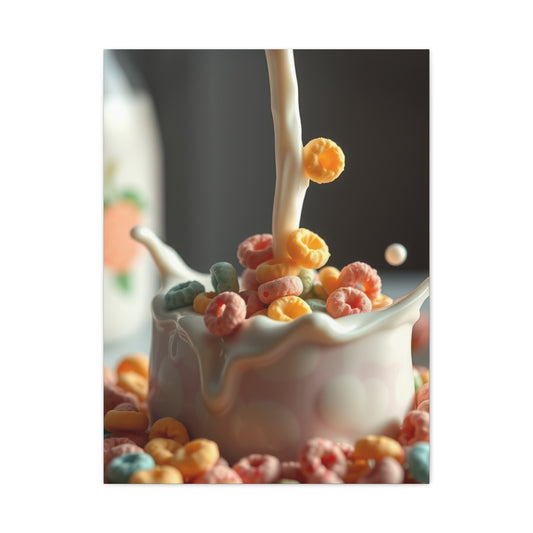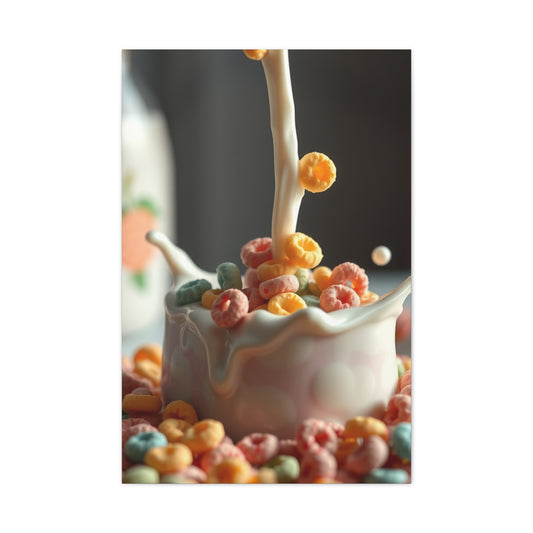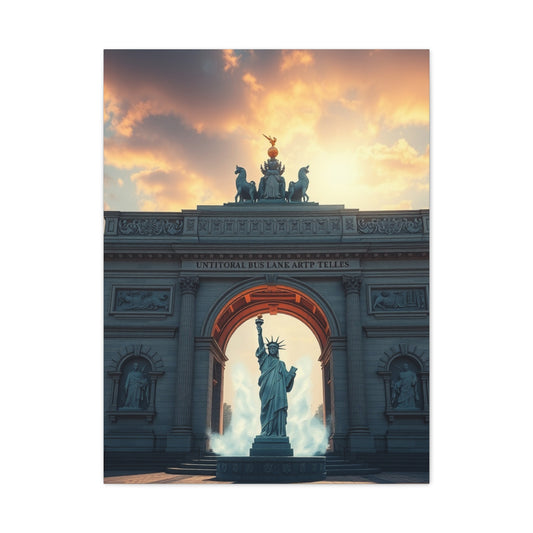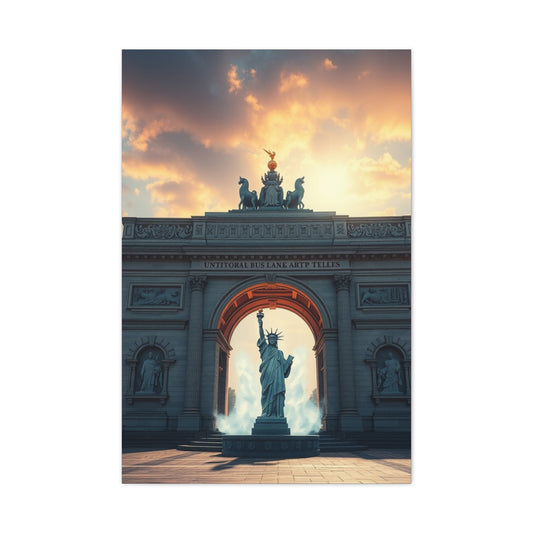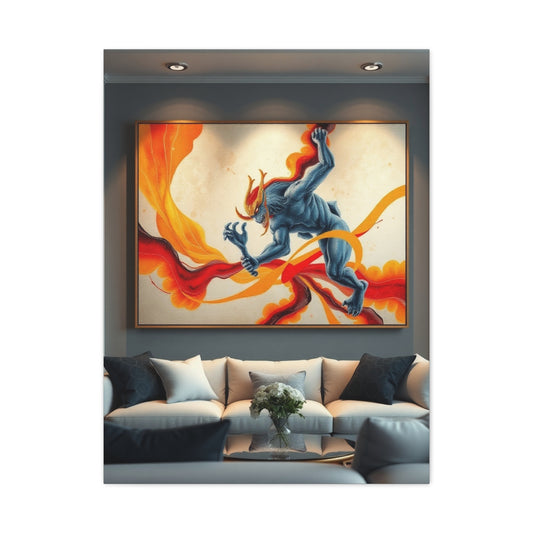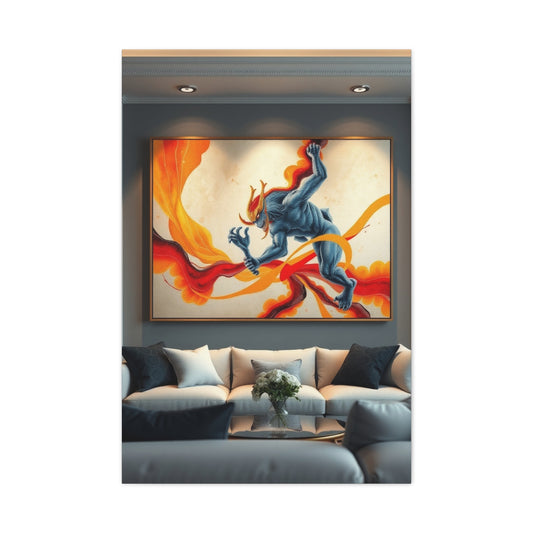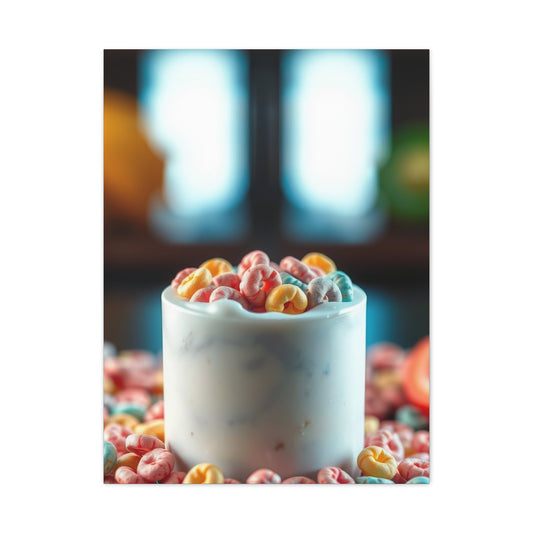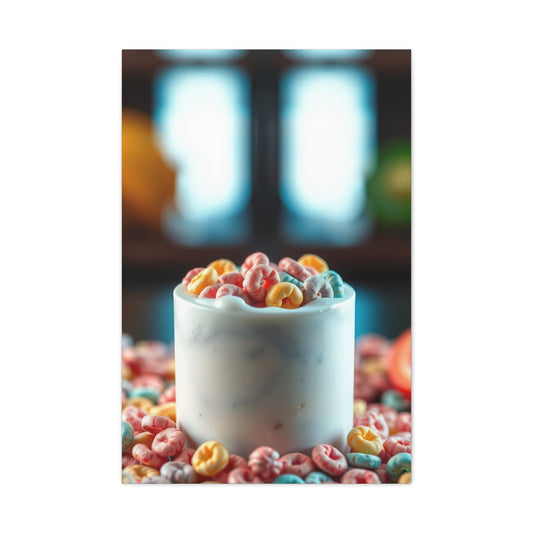Wall putty is one of the most essential materials in creating smooth, durable, and visually appealing walls. Often overlooked, it serves as the foundational layer that prepares walls for painting, wallpapering, or decorative finishes. Without wall putty, even the highest-quality paint or wallpaper can look uneven, peel prematurely, or fail to adhere properly. Its function goes beyond aesthetics; it protects walls, conceals imperfections, and enhances the longevity of the surface treatment applied afterward.
The primary purpose of wall putty is to provide a smooth and even surface. Walls, whether new or old, can have minor cracks, dents, rough textures, or uneven plastering. Wall putty fills these imperfections, creating a uniform base that ensures the paint or wallpaper has a flawless finish. Without it, walls are prone to visible defects, uneven texture, and diminished durability of the decorative layers. In essence, wall putty acts as both a protective shield and a canvas for creativity in interior design.
There are mainly two types of wall putty used in homes: acrylic wall putty and cement-based wall putty. Each has its distinct composition, applications, and benefits, making it essential to understand their differences before making a choice.
Acrylic wall putty is a water-based, ready-to-use paste that offers a smooth, polished texture. It is primarily used for interior walls due to its ease of application and fine finish. Acrylic putty adheres well to wall surfaces, seals minor cracks, and prevents peeling or flaking of paint over time. Its water-based formulation makes it safe, eco-friendly, and easy to handle, even for DIY projects. Acrylic putty also allows for creative finishes, such as textured or embossed patterns, which can add depth and personality to living spaces.
Cement-based wall putty, on the other hand, comes in powder form and requires mixing with water to create a workable paste. It is made from white cement, fine minerals, and polymers, offering excellent bonding strength and durability. Cement-based putty is versatile, suitable for both interior and exterior walls, and can withstand harsh environmental conditions such as moisture, sunlight, and temperature variations. Its finish is glossy, and it provides a robust surface for painting, ensuring long-lasting performance. Cement-based putty is commonly preferred in areas prone to wear and tear or where higher durability is required.
The choice between acrylic and cement-based putty depends on several factors, including the type of wall, location, and desired finish. Acrylic putty is ideal for interior spaces where a smooth, even surface is desired, and ease of application is a priority. Cement-based putty is preferred for areas that need extra durability or are exposed to external conditions. Both types of putty play a vital role in protecting walls, improving adhesion, and enhancing the aesthetic appeal of the finished surface.
One of the key advantages of wall putty is its ability to improve paint adhesion. Paint applied directly to raw or uneven walls often peels, flakes, or fades quickly because it lacks a stable base. Wall putty fills the microscopic pores of plastered walls and smooths out minor imperfections, creating a surface that allows paint to bond effectively. This results in a longer-lasting finish, uniform color, and consistent texture, ensuring that the walls look fresh and polished for years.
Wall putty also provides a protective barrier against environmental factors. Moisture, temperature changes, and structural shifts can all impact the quality of walls. Acrylic putty is flexible enough to accommodate minor wall movements without cracking, making it suitable for interior walls that may experience vibrations or settling. Cement-based putty is highly durable and hard, offering resistance to external stress, making it ideal for exterior walls, balconies, and other high-traffic areas. This protective quality ensures that walls remain strong, smooth, and visually appealing over time.
Moisture management is another important benefit of wall putty. Water infiltration can cause bubbling, peeling, or staining on painted surfaces. Wall putty acts as a sealant, filling micro-cracks and creating a barrier against moisture. Some cement-based putty formulations are specifically designed to resist water penetration and prevent efflorescence, a common issue where white salt deposits appear on walls. By preventing moisture-related damage, wall putty ensures that interiors remain healthy, safe, and aesthetically pleasing.
Wall putty also allows for creative freedom in interior design. Beyond simply providing a smooth base, it can be used to create textures, patterns, and decorative finishes that enhance the look of walls. Techniques such as troweling, sponging, rolling, or combing can produce a variety of effects, from subtle textures to bold three-dimensional designs. Homeowners can use putty to mimic materials like stone, marble, or fabric, turning ordinary walls into distinctive design elements that add character to any room.
Application of wall putty requires careful surface preparation. Walls must be clean, dry, and free of dust, grease, or loose particles to ensure proper adhesion. Cracks, holes, and uneven areas should be pre-filled and leveled before applying putty. For cement-based putty, correct mixing with water is essential to achieve a uniform consistency. Acrylic putty is easier to apply but still requires attention to spreading and smoothing to achieve a flawless finish. Proper application ensures that the putty layer performs effectively, providing a long-lasting and visually appealing foundation.
Durability is a significant factor in wall putty’s effectiveness. Both acrylic and cement-based putties are designed to withstand minor structural movements, temperature fluctuations, and environmental stress. Acrylic putty offers flexibility, preventing cracking in interior walls, while cement-based putty provides hardness and strength for exterior or high-stress areas. These qualities ensure that walls retain their smooth finish and remain prepared for painting or decorative treatments for years.
Wall putty also enhances the overall quality of interior finishes. Smooth walls created with putty allow paint to appear more vibrant, consistent, and professional. Imperfections such as small cracks or surface roughness are concealed, resulting in a seamless finish. This contributes to the aesthetic appeal of interiors, whether in living rooms, bedrooms, kitchens, or hallways. By using putty as a preparatory layer, homeowners can achieve high-quality results that enhance the beauty and value of their spaces.
Maintenance of putty-coated walls is straightforward. Walls with properly applied putty are easier to clean, as the smooth surface prevents dirt from accumulating in crevices. Minor scratches, chips, or cracks can be repaired quickly with a small amount of putty, sanded smooth, and repainted if necessary. Regular cleaning and occasional touch-ups keep walls looking fresh, while the underlying protective layer of putty continues to enhance durability. This simplicity in maintenance makes wall putty a practical choice for both new and renovated homes.
Another key advantage of wall putty is its affordability. Compared to extensive plastering, resurfacing, or decorative wall treatments, putty is cost-effective, requiring minimal tools and time. It provides a high-quality finish at a fraction of the cost of more elaborate solutions. Its ease of use also allows DIY enthusiasts to achieve professional results without specialized equipment or advanced skills. This balance of quality, affordability, and convenience makes wall putty a popular choice for homeowners and contractors alike.
In interior design, wall putty opens doors to a variety of creative possibilities. Smooth finishes create a sleek, modern look that complements minimalist and contemporary interiors. Textured finishes add depth and character, creating focal points and enhancing the overall ambiance of rooms. Techniques such as stippling, sponging, and trowel texturing enable unique wall effects that reflect personal taste and style. Wall putty transforms basic walls into artistic canvases, making them central elements of interior decor rather than just functional surfaces.
Wall putty is also an essential component in addressing structural and cosmetic issues. Minor cracks, dents, and uneven plaster can compromise both the appearance and longevity of walls. By filling these imperfections, wall putty not only improves aesthetics but also contributes to the structural integrity of wall surfaces. Cement-based putty, with its robust bonding and hardness, is particularly effective for reinforcing exterior walls, balconies, and areas exposed to wear and environmental stress. Acrylic putty provides a flexible solution for interior walls, maintaining smooth finishes while accommodating minor movements in the structure.
For homeowners seeking eco-friendly solutions, there are water-based and low-VOC formulations of wall putty. These options reduce the release of harmful chemicals into the environment and indoor spaces, making them safer for families and pets. Choosing environmentally responsible putty ensures that homes maintain high-quality finishes while minimizing their impact on air quality and sustainability.
Wall putty is a versatile, practical, and creative material that forms the foundation of beautiful and durable walls. Whether selecting acrylic putty for smooth interior finishes or cement-based putty for durable, exterior-ready surfaces, it prepares walls for painting, wallpapering, and decorative treatments while protecting against moisture, cracks, and imperfections. Wall putty not only enhances aesthetics but also improves paint adhesion, durability, and overall longevity of wall surfaces. By understanding its types, applications, and benefits, homeowners can make informed choices that elevate the look and functionality of their living spaces. Proper selection, preparation, and application of wall putty transform ordinary walls into flawless, resilient, and visually appealing elements of modern homes.
Acrylic vs Cement-Based Wall Putty: Choosing the Best Option for Your Walls
Selecting the right wall putty is crucial to achieving flawless walls that are both durable and visually appealing. Acrylic and cement-based wall putties are the two primary options available for modern homes, each offering unique advantages and suitable for different applications. Understanding their properties, performance, and limitations allows homeowners to make informed decisions based on their interior or exterior requirements.
Acrylic wall putty is a ready-to-use, water-based paste that provides a smooth and even surface, ideal for interior walls. One of its primary advantages is ease of application. Unlike cement-based putty, which requires mixing with water, acrylic putty comes pre-mixed in a consistent texture, allowing for faster and more precise application. Its spreadability ensures uniform coverage over the wall surface, creating a flawless base for paint or wallpaper. This makes it especially suitable for DIY projects or situations where professional tools or skills are limited.
The finish achieved with acrylic putty is smooth, refined, and visually appealing. It effectively conceals minor cracks, dents, and uneven patches on plastered walls, preventing them from showing through the paint. Its ability to seal small imperfections ensures that walls maintain a clean, polished look over time. Additionally, acrylic putty is lightweight, flexible, and resistant to peeling or flaking, which enhances the longevity of interior wall finishes. This makes it ideal for bedrooms, living rooms, and other spaces where aesthetics and smoothness are priorities.
Another advantage of acrylic putty is its eco-friendly formulation. Being water-based, it has low volatile organic compound (VOC) content, which reduces the release of harmful chemicals into indoor spaces. This contributes to healthier indoor air quality and is safer for families, children, and pets. Its minimal environmental impact makes acrylic putty a responsible choice for homeowners who value sustainable and safe building materials.
However, acrylic putty does have limitations. It is primarily designed for interior use and may not withstand harsh external conditions such as heavy rainfall, direct sunlight, or extreme temperature fluctuations. Prolonged exposure to moisture can reduce its effectiveness, making it less suitable for exterior walls, balconies, or bathrooms unless paired with appropriate waterproofing solutions. Additionally, while acrylic putty provides a smooth surface, creating intricate textures or high-relief designs may require additional skill and layering techniques.
Cement-based wall putty, by contrast, is a powder that must be mixed with water to achieve a workable paste. Composed of white cement, fine minerals, and polymers, it is highly versatile and suitable for both interior and exterior applications. Its key advantage lies in its durability and strength. Cement-based putty adheres firmly to plastered surfaces and withstands environmental stress, making it ideal for areas exposed to moisture, sunlight, or frequent wear. This robustness ensures that painted walls remain intact and aesthetically pleasing for years.
The finish of cement-based putty is glossy and hard, providing a strong base for paint or other decorative finishes. Its high bonding capacity allows it to remain securely attached to surfaces, reducing the risk of cracking, flaking, or peeling. Cement-based putty also resists minor structural movements, making it suitable for exterior walls, high-traffic areas, and spaces prone to vibrations or settling. Its adaptability ensures that walls retain their smooth appearance while benefiting from enhanced structural protection.
Cement-based putty can be customized for various textures and finishes. While it naturally produces a hard, smooth surface, skilled application techniques can create subtle patterns, textures, or layered effects for decorative purposes. This versatility allows homeowners and designers to achieve both functional and aesthetic goals, whether aiming for a polished interior or a resilient exterior surface. Cement-based putty also integrates well with primers and paints, enhancing adhesion and extending the lifespan of the decorative layer.
When comparing acrylic and cement-based putties, several factors help determine the best choice. For interior walls where a smooth, refined finish is desired, acrylic putty is the preferred option due to its ease of application, flexibility, and eco-friendliness. For exterior walls, balconies, or areas exposed to moisture and environmental stress, cement-based putty is more suitable because of its durability, bonding strength, and resistance to cracking or efflorescence. Both types contribute to paint adhesion and provide a base that prevents imperfections from showing through decorative finishes.
In terms of maintenance, acrylic putty-coated walls are relatively easy to care for. Their smooth surface allows for simple dusting or light cleaning, and minor scratches or chips can be repaired quickly. Cement-based putty also offers straightforward maintenance but is more robust against wear, making it ideal for high-traffic or exposed areas. Choosing the correct putty type based on the location and expected environmental conditions ensures long-lasting walls with minimal upkeep.
Cost considerations also play a role in selecting wall putty. Acrylic putty is generally slightly more expensive than cement-based powder on a per-unit basis due to its ready-to-use formulation and convenience. However, the ease of application and reduced labor time can offset this difference. Cement-based putty, while less expensive in raw material cost, requires careful mixing, skilled application, and sometimes additional tools, which may influence overall project cost. Evaluating both material and labor requirements helps homeowners make cost-effective decisions.
Another important factor is drying time. Acrylic putty typically dries faster than cement-based putty, allowing for quicker subsequent painting or wallpapering. Cement-based putty may require longer drying periods, especially when applied in thicker layers or in humid conditions. Adequate drying is essential to prevent cracking, peeling, or uneven finishes, making it crucial to follow manufacturer guidelines and consider environmental conditions during application.
Texture and design possibilities differ between the two types as well. Acrylic putty provides a smoother, more refined surface suitable for glossy or matte paint finishes. Cement-based putty, with its hardness and adaptability, can be used for both smooth and textured designs, including embossed patterns or subtle decorative effects. Both types support creative expression, but the techniques and tools may vary depending on the putty chosen.
Environmental resistance is another key difference. Acrylic putty is water-resistant but not fully waterproof, making it vulnerable in high-humidity areas unless combined with additional waterproofing solutions. Cement-based putty, due to its mineral composition and polymer additives, has higher resistance to moisture and environmental exposure, which makes it suitable for exterior walls and damp-prone areas. Considering the location and environmental conditions is critical to selecting the right type of putty.
In terms of application techniques, both putty types require surface preparation. Walls must be clean, dry, and free of dust or grease to ensure proper adhesion. Cracks or holes should be pre-filled and leveled. Acrylic putty is easier to spread and smooth, often allowing a single coat application for minor imperfections. Cement-based putty may require multiple coats for optimal coverage and finishing, particularly for uneven or porous surfaces. Sanding between coats ensures a uniform, polished surface ready for painting or wallpapering.
Both putty types support painting and decorative finishes. Acrylic putty provides an excellent base for water-based paints, wallpapers, and decorative textures. Cement-based putty is compatible with a wider range of paints, primers, and finishes, including exterior-grade coatings. Choosing the appropriate putty ensures better paint adhesion, longevity, and a high-quality final appearance.
The choice between acrylic and cement-based wall putty depends on location, desired finish, environmental exposure, and application preferences. Acrylic putty is ideal for smooth, interior walls, offering ease of application, flexibility, and eco-friendly properties. Cement-based putty is suitable for interior and exterior walls requiring durability, moisture resistance, and strong bonding. Both types enhance paint adhesion, conceal imperfections, and provide a foundation for creative textures and decorative effects. Understanding their properties, advantages, and limitations ensures homeowners make the best choice for durable, visually appealing, and long-lasting walls.
Creative Wall Putty Designs to Elevate Your Interiors
Wall putty is more than a preparatory layer for painting; it is a versatile medium that allows homeowners to transform ordinary walls into artistic statements. While its primary function is to create smooth, even surfaces, wall putty can also be manipulated to achieve a variety of textures, patterns, and decorative finishes. By experimenting with application techniques, tools, and layering, you can add depth, character, and personality to every room.
One of the most popular approaches is achieving textured finishes. Textured wall putty designs provide visual interest by creating subtle or bold patterns that catch light and add dimension. Techniques such as troweling, combing, stippling, and sponging allow for a wide range of effects. Troweling involves using a putty knife or trowel to spread and shape the putty into smooth, flowing waves or abstract patterns. This creates an elegant, contemporary look suitable for living rooms or feature walls.
Combing is another method that produces fine, linear textures on walls. By dragging a comb-like tool across wet putty, you can create parallel lines or intricate geometric patterns. This technique is particularly effective in modern or minimalistic interiors where clean lines enhance the overall aesthetic. Combing can also be combined with contrasting paint colors to emphasize the design and create a subtle three-dimensional effect.
Stippling is a classic decorative technique achieved by gently pressing a sponge or brush onto freshly applied putty. This creates a soft, dappled texture that adds warmth and depth to walls. Stippling is versatile and works well in bedrooms, hallways, or accent walls. It can be applied subtly for a delicate effect or more aggressively for a dramatic visual impact. Homeowners often use stippling in combination with pastel or muted paint colors to achieve cozy and inviting interiors.
Sponging, similar to stippling, uses a natural or synthetic sponge to dab putty onto walls. By varying the pressure and movement, you can create organic textures that mimic natural surfaces such as stone, marble, or sand. Sponged putty walls add tactile richness and visual intrigue, turning a plain wall into a statement piece. This technique pairs well with neutral or earthy tones, giving interiors a sophisticated and textured backdrop for furniture and decor.
For more elaborate decorative finishes, wall putty can be used to create embossed patterns or three-dimensional designs. Using specialized tools or molds, putty can be sculpted into motifs such as floral patterns, geometric shapes, or abstract art. These raised designs catch light differently, adding dimension and a dynamic quality to walls. Feature walls with embossed putty designs become focal points in living spaces, providing both aesthetic appeal and a sense of luxury without the need for expensive cladding or wallpaper.
Faux finishes are another popular application of wall putty. By manipulating textures, layering colors, and using specific techniques, homeowners can achieve the appearance of natural materials such as marble, stone, or wood. For instance, a combination of combing, sponging, and color washes can produce a marble-like effect that is both realistic and affordable. Similarly, layered texturing with subtle color variations can create the illusion of weathered stone or concrete, giving interiors a modern industrial feel. Faux finishes allow creativity while maintaining cost-effectiveness and durability.
Wall putty can also be combined with metallic or pearlescent pigments to create shimmering finishes. By incorporating mica powders, metallic paints, or reflective additives into the putty, you can achieve walls that subtly change appearance under different lighting conditions. This technique works exceptionally well in living rooms, dining areas, or feature walls, where ambient lighting enhances the effect. Metallic and pearlescent finishes add a contemporary, luxurious touch while maintaining the protective and smooth base properties of the putty.
Color can be introduced into the wall putty itself, rather than relying solely on paint. Some acrylic putties allow tinting with compatible pigments, enabling homeowners to achieve a custom-colored base. A tinted putty base can intensify the final paint color, provide a subtle background hue, or create layered color effects. This approach offers more control over the final look and allows for creative experimentation with monochromatic or complementary color schemes.
Textured borders and accent areas are another creative use of wall putty. For example, you can apply a smooth putty base across an entire wall and then create textured panels, stripes, or geometric shapes as accents. This combination of smooth and textured areas adds depth, visual hierarchy, and a sophisticated touch to interiors. Accent walls with putty designs can serve as focal points behind beds, sofas, or dining tables, making them ideal for modern and contemporary design schemes.
Layering techniques enhance the versatility of wall putty in decorative applications. Multiple layers of putty can be applied sequentially, with each layer shaped, textured, or embossed differently. This creates a multidimensional effect that is visually rich and tactile. For example, a base layer can be smoothed and sanded, the second layer can be stippled or combed, and the final layer can incorporate color washes or metallic finishes. Layered putty designs offer endless creative possibilities for homeowners who want distinctive, custom interiors.
Wall putty also allows for playful experimentation with geometric patterns and artistic motifs. Tools like stencils, molds, or templates can guide the creation of precise shapes, symmetrical designs, or repeating patterns. Geometric patterns with sharp lines or repetitive forms provide a modern, minimalistic appeal, while organic motifs offer a softer, natural aesthetic. By combining techniques, textures, and colors, putty becomes a medium for artistic expression, allowing homeowners to personalize their interiors uniquely.
3D wall putty designs are increasingly popular in contemporary homes. These designs involve sculpting putty into raised or recessed shapes that add tangible dimension to walls. 3D designs can range from subtle ripples or waves to bold floral, abstract, or geometric forms. They provide visual depth, enhance lighting effects through shadows, and create immersive interior environments. Feature walls with 3D putty designs are highly effective in living rooms, bedrooms, and entryways, offering a dramatic and artistic statement.
Textured ceilings are another creative avenue for wall putty. Ceilings often receive less attention than walls, but decorative putty finishes can turn them into standout features. Techniques such as combing, stippling, and sponging can be applied to ceilings to create patterns, simulate fabric textures, or introduce subtle visual interest. Combined with proper lighting, textured ceilings add elegance and depth, transforming ordinary spaces into more sophisticated interiors.
For areas like kitchens and bathrooms, putty designs can be adapted with moisture-resistant formulations. Acrylic-based putties or cement-based putties with polymer additives can withstand humidity, allowing creative textures and finishes even in wet areas. Textured backsplashes, accent panels, or patterned walls can be achieved without compromising durability or water resistance. These applications enhance aesthetics while maintaining functionality and protection against moisture damage.
Combining wall putty with painting techniques further expands design options. After applying textured or smooth putty finishes, homeowners can use techniques such as color washes, glazing, or layering multiple paint tones to enhance depth and visual interest. For instance, a stippled putty wall overlaid with a light glaze creates a soft, dynamic finish, while metallic or pearlescent paint on textured putty highlights dimensional features. This synergy of putty and paint allows for highly personalized and visually striking interiors.
Wall putty also facilitates cost-effective creativity. Achieving intricate textures or faux finishes using solid materials like marble, stone, or wood would be expensive and labor-intensive. Putty provides a versatile, affordable alternative, enabling homeowners to experiment with high-end looks without the associated cost. Its lightweight, flexible nature also makes application easier on walls of varying sizes and shapes, further enhancing its practicality in home decor projects.
Maintenance of creatively textured walls is straightforward. Dusting or light cleaning keeps textured surfaces fresh, and minor repairs can be made with small amounts of putty. Well-applied putty layers protect underlying plaster and paint, reducing wear and tear. Homeowners can maintain the aesthetic appeal of textured walls for years without frequent intervention, making decorative putty both practical and stylish.
Wall putty is a powerful medium for enhancing interior aesthetics beyond its functional role as a base for paint. Through techniques like troweling, combing, stippling, sponging, embossing, and layering, homeowners can create textures, patterns, and three-dimensional designs that elevate the character of every room. Acrylic and cement-based putties offer unique possibilities for interior and exterior applications, allowing for durable, visually appealing, and personalized surfaces. By combining putty with color, lighting, and paint techniques, walls become expressive canvases, transforming ordinary spaces into immersive, stylish, and modern interiors. Creative wall putty designs demonstrate the versatility of this essential material, making it indispensable for homeowners seeking beauty, functionality, and individuality in their living spaces.
Applying Wall Putty: Preparation, Techniques, and Maintenance
Proper application of wall putty is critical to achieving flawless walls that are both durable and visually appealing. Even the highest-quality putty cannot perform well if the surface is not adequately prepared or the application is done incorrectly. Understanding the steps, techniques, and maintenance practices ensures that walls remain smooth, strong, and ready for painting or decorative finishes for years.
Surface preparation is the first and most essential step in wall putty application. Walls must be clean, dry, and free of dust, grease, or loose particles. Any dirt or residue can prevent putty from adhering properly, leading to peeling, cracking, or uneven finishes. For new plastered walls, ensure that the surface has cured completely and any moisture has evaporated. For older walls, remove flaking paint, debris, or previous wallpaper residues. Proper cleaning and drying provide a stable foundation, allowing the putty to bond effectively.
Cracks, holes, and dents on the wall must be addressed before applying putty. Small imperfections can be filled with a base layer of putty or a suitable filler, leveled with a putty knife, and allowed to dry. Uneven areas or protrusions should be sanded down to create a uniform surface. Taking time to repair and level imperfections ensures that the subsequent putty layer achieves a smooth, professional finish. For larger structural cracks, it is advisable to reinforce the wall with mesh or a suitable filler before putty application.
Mixing the putty correctly is another vital step. Acrylic wall putty is usually ready-to-use and requires no additional mixing, which simplifies the application process. Cement-based putty, however, comes in powder form and must be mixed with water to achieve the desired consistency. Follow the manufacturer’s instructions regarding the powder-to-water ratio carefully. Mix thoroughly to eliminate lumps and ensure a smooth, homogeneous paste. Incorrect mixing can lead to poor adhesion, uneven texture, or premature cracking.
Applying the putty requires the right tools and technique. A putty knife or trowel is typically used to spread the putty evenly across the wall. Work in small sections to maintain control and uniformity. Start from the top of the wall and move downward, applying a thin, even layer. Avoid applying excessive pressure, which can create ridges or uneven thickness. For cement-based putty, multiple coats may be necessary to achieve a perfectly smooth surface, with each coat applied after the previous one has partially set.
Drying time is critical for the durability and finish of the wall. Acrylic putty generally dries faster than cement-based putty, but both require adequate time before sanding or painting. Environmental factors such as humidity, temperature, and ventilation can influence drying duration. Avoid rushing the process; applying paint or wallpaper over inadequately dried putty can result in cracking, bubbling, or peeling. Allow each layer to dry completely, following manufacturer guidelines.
Sanding is an essential step after putty application. Use fine-grit sandpaper to smooth out rough spots, ridges, or minor imperfections. Sanding creates a polished, even surface that enhances the adhesion and finish of paint or wallpaper. For textured designs, light sanding may be sufficient, while smooth surfaces require more thorough sanding. Proper sanding ensures that the final decorative layer looks professional and seamless.
Priming the wall after putty application improves paint adhesion and protects the surface. Apply a primer over the dried and sanded putty to create a stable base for paint or wallpaper. Priming also prevents uneven absorption of paint and enhances color vibrancy. For walls with textured designs, use a primer compatible with textured surfaces to ensure uniform coverage. Proper priming extends the lifespan of the paint and maintains the aesthetic appeal of the walls.
Maintenance of putty-coated walls is straightforward but important to preserve their appearance and durability. Smooth walls require minimal cleaning; a soft cloth or duster is usually sufficient to remove dust. For textured or embossed designs, use a soft brush to remove debris from grooves and patterns. Avoid harsh chemicals or abrasive cleaning tools that may damage the putty surface. Regular cleaning helps maintain the fresh and polished look of both acrylic and cement-based putty walls.
Repairing minor damage on putty-coated walls is simple. Small scratches, chips, or cracks can be filled with a thin layer of putty, smoothed, and allowed to dry before repainting. For textured designs, carefully replicate the texture or pattern when applying the repair layer. Addressing minor issues promptly prevents them from worsening and ensures the longevity of the wall finish.
Environmental considerations are also important during application and maintenance. Acrylic putty performs best in controlled indoor conditions, while cement-based putty withstands outdoor exposure, humidity, and temperature fluctuations. For wet areas like bathrooms or kitchens, consider moisture-resistant formulations to prevent water damage, efflorescence, or mold growth. Proper selection and application of putty based on environmental conditions ensures walls remain durable and attractive.
Tool selection and handling influence the quality of putty application. High-quality stainless steel or plastic trowels provide smooth spreading and reduce streaking or ridges. Sponges, brushes, or combs are used for creating textures or patterns. Maintain tools clean and dry between uses to prevent contamination of the putty and ensure consistent results. Skilled handling of tools allows homeowners to achieve professional-quality finishes even on large walls or complex surfaces.
Layering techniques enhance both smooth and textured finishes. For smooth walls, thin layers applied sequentially and sanded in between achieve a flawless surface. For textured walls, multiple layers can be manipulated to create depth and dimension. Each layer must be allowed to partially or fully drain, depending on the design. Layering ensures durability, prevents cracking, and allows creative flexibility in decorative finishes.
For large walls or high ceilings, proper planning and sectioning are important. Divide walls into manageable sections and work consistently to maintain uniformity. For feature walls with textures, plan the pattern or design to ensure symmetry and coherence. Sectioning and planning help avoid uneven drying, streaks, or mismatched patterns, ensuring that the entire surface has a professional and cohesive appearance.
Drying conditions play a crucial role in maintaining the quality of putty finishes. Ensure adequate ventilation and moderate temperatures during drying to prevent rapid water evaporation, which can cause cracks. Avoid applying additional coats, paint, or wallpaper if the surface is still damp. Monitoring drying conditions and adjusting application pace improves adhesion, durability, and overall finish quality.
Maintenance tips for longevity include periodic inspection for cracks, moisture damage, or discoloration. Address issues promptly using compatible putty or repairs to prevent larger problems. Textured walls may require gentle cleaning to preserve intricate patterns. Avoid excessive moisture, prolonged direct sunlight, or mechanical impact that can compromise putty finishes. Proper maintenance ensures that walls retain their aesthetic appeal and protective qualities for years.
Safety considerations during application include wearing protective gloves, masks, and eyewear. Acrylic putty is water-based and relatively safe, but cement-based putty may contain fine dust that can irritate skin or respiratory passages. Use protective gear, work in well-ventilated areas, and follow manufacturer safety guidelines to ensure safe handling. Safe practices protect both the applicator and the indoor environment from contamination or health risks.
The proper application, preparation, and maintenance of wall putty are critical to achieving durable, smooth, and aesthetically pleasing walls. By understanding surface preparation, mixing, application techniques, drying times, sanding, priming, and maintenance, homeowners can ensure long-lasting results for both acrylic and cement-based putty. Creative textures, layered designs, and patterned finishes can be achieved with careful planning and skilled application, turning ordinary walls into visually striking elements of interior design. Wall putty not only protects and strengthens walls but also provides endless opportunities for creativity, enhancing the beauty and functionality of modern homes.
Advanced Wall Putty Techniques for Stunning Interior Designs
Wall putty is not just a preparatory material for painting; it is a creative tool that allows homeowners and designers to explore innovative ways to enhance interiors. Beyond smooth surfaces and basic textures, advanced decorative techniques transform ordinary walls into works of art. By combining textures, layering, 3D effects, and faux finishes with complementary paint treatments, walls can become focal points that elevate the entire ambiance of a room.
One of the most striking applications of wall putty is creating three-dimensional wall designs. 3D putty designs involve sculpting the material to form raised or recessed patterns that play with light and shadow. This technique is particularly effective for feature walls in living rooms, bedrooms, or entryways. Patterns can range from subtle waves or ripples to bold floral, geometric, or abstract motifs. The interplay of light across these surfaces creates depth and visual interest, making walls an integral part of interior design rather than just a background.
Achieving 3D designs requires careful planning and the right tools. Molds, stencils, and specialized trowels help shape consistent patterns across large surfaces. Layering putty in multiple stages allows for precise detailing and ensures durability. Each layer must be allowed to dry adequately before applying the next to avoid cracks or uneven textures. This method requires patience, but the results are striking and provide a high-end, custom look that elevates any interior space.
Faux finishes are another way to maximize the decorative potential of wall putty. Faux finishes mimic the appearance of natural materials such as marble, stone, wood, or metal, offering a luxurious look without the associated cost and maintenance. For example, by applying layered putty and then lightly sanding or sponging, a wall can resemble polished marble. Adding tinted pigments or metallic powders enhances the realism and creates a dynamic effect that changes with light and perspective. Faux finishes are ideal for living rooms, dining areas, and feature walls where visual impact is desired.
Metallic and pearlescent finishes offer an opulent twist to traditional putty designs. By mixing metallic powders or reflective pigments into acrylic or cement-based putty, walls gain a subtle shimmer or glow. The effect can be used sparingly as an accent or more extensively for dramatic impact. Metallic finishes work particularly well in combination with indirect lighting, as the reflective properties of the surface create a sophisticated, modern ambiance. These finishes are popular in contemporary and luxury interiors, adding depth and visual intrigue.
Layered textures are an effective technique for adding dimension to walls. This involves applying multiple layers of putty, each with different finishes or textures. For instance, a base layer might be smooth to provide structural support, a middle layer could feature subtle stippling, and the top layer might include troweled or combed patterns. By layering textures, walls gain a sense of depth and complexity, transforming a flat surface into a visually engaging canvas. Layering also allows for subtle variations in color and light reflection, enhancing the overall effect.
Combining wall putty textures with paint techniques expands creative possibilities even further. Techniques such as color washing, glazing, and gradient painting complement textured putty surfaces. For example, a stippled or combed putty wall can be overlaid with a light glaze to accentuate patterns and create a soft, luminous finish. Gradient painting on textured walls produces a dynamic visual flow, drawing attention to specific areas or emphasizing architectural features. The combination of putty and paint allows for highly personalized designs tailored to individual tastes and room aesthetics.
Accent walls are a practical and impactful way to utilize wall putty creatively. By focusing decorative techniques on a single wall, homeowners can make a strong visual statement without overwhelming a room. Textured panels, geometric shapes, or 3D motifs on an accent wall serve as focal points and set the tone for interior design. Accent walls can also be enhanced with complementary furniture, lighting, or decor elements to create cohesive and stylish interiors.
Wall putty also offers opportunities for creating artistic murals or thematic designs. Skilled artisans can use putty to sculpt detailed shapes or patterns, which can then be painted in vibrant or muted colors. From abstract art to floral or nature-inspired themes, putty provides a versatile medium for creative expression. These murals turn ordinary walls into immersive art pieces, adding personality and uniqueness to living spaces.
For modern and minimalistic interiors, subtle textured finishes are ideal. Lightly troweled waves, soft stippling, or gentle combing produce understated elegance that complements sleek furniture and neutral color schemes. Subtle textures create visual interest without overpowering the overall design, making walls feel refined and sophisticated. Minimalistic putty textures also pair well with metallic accents, glass elements, and ambient lighting, enhancing the contemporary aesthetic.
Textured ceilings are an often-overlooked application of wall putty that can dramatically enhance interiors. Techniques such as stippling, sponging, and combing applied to ceilings create dimension and complement wall designs. Textured ceilings also diffuse light effectively, adding warmth and character to a room. By coordinating ceiling textures with wall patterns, homeowners achieve cohesive and visually harmonious interiors.
Maintenance of advanced putty designs requires consideration of both texture and material. Smooth and lightly textured walls can be cleaned with a soft cloth or duster. More elaborate 3D or embossed surfaces benefit from gentle cleaning with a soft brush to remove dust from grooves. Preventive measures, such as avoiding direct impact, excessive moisture, or harsh cleaning chemicals, preserve the integrity and appearance of putty designs. Prompt repair of minor cracks or chips ensures longevity and maintains aesthetic appeal.
In spaces with high humidity, such as kitchens and bathrooms, moisture-resistant formulations of putty are essential for advanced decorative techniques. Acrylic-based putty or cement-based putty with polymer additives resists water penetration, preventing damage to textures and finishes. Decorative techniques such as 3D embossing, combed patterns, or sponged finishes can still be applied in wet areas when moisture-resistant putty is used, maintaining both beauty and durability.
Combining wall putty with lighting enhances the impact of decorative finishes. Accent lighting, wall washers, or spotlights can highlight textures, 3D patterns, or metallic finishes, creating dynamic visual effects. Shadows cast by embossed or layered putty surfaces add depth, while reflective pigments amplify the glow, transforming walls into focal points that shift appearance throughout the day. Proper lighting complements putty designs, bringing artistry and drama to interiors.
Eco-friendly and low-VOC putty options are increasingly available, allowing homeowners to implement advanced decorative techniques without compromising environmental or indoor air quality. These putties maintain the same creative flexibility and durability as conventional formulations while reducing exposure to harmful chemicals. Using eco-friendly putty aligns with sustainable design principles and ensures a healthier indoor environment, particularly in bedrooms, living rooms, and spaces frequently occupied by children or elderly family members.
Advanced wall putty techniques provide homeowners with endless creative possibilities. From 3D effects and layered textures to faux finishes, metallic accents, and artistic murals, wall putty transforms ordinary walls into expressive, visually stunning surfaces. By combining textures with paint treatments, lighting, and careful planning, interiors can achieve sophistication, depth, and uniqueness. Moisture-resistant formulations, eco-friendly options, and proper maintenance ensure that these decorative effects remain durable and aesthetically pleasing over time. Wall putty is not merely a functional necessity but a versatile design medium that allows homeowners to customize their living spaces with style, creativity, and elegance.
Troubleshooting, DIY Tips, and Long-Term Maintenance for Wall Putty
Wall putty is a versatile and essential material for achieving smooth, durable, and aesthetically pleasing walls. However, even high-quality putty can encounter challenges if not applied correctly or maintained properly. Understanding common issues, troubleshooting solutions, DIY application tips, and long-term maintenance strategies ensures that your walls remain flawless and visually appealing over time.
One of the most common challenges with wall putty is cracking. Cracks can appear due to improper surface preparation, uneven application, rapid drying, or environmental stress. To prevent cracking, it is essential to clean and dry walls thoroughly before application. Fill any existing cracks or dents with suitable filler, and apply putty in thin, even layers. Allow sufficient drying time between coats, and avoid applying putty in excessively humid or extremely dry conditions. Using high-quality putty, especially that with polymer additives, also reduces the risk of cracking.
Peeling or flaking is another issue that can occur when putty does not adhere properly to the wall surface. This can result from applying putty on dirty, damp, or poorly prepared walls. To avoid peeling, ensure walls are free from dust, grease, or loose particles. For cement-based putty, mix the powder thoroughly with water to achieve a smooth, consistent paste. Acrylic putty, being pre-mixed, requires minimal preparation but still needs a clean, dry surface. Proper priming before painting or wallpapering enhances adhesion and prevents future peeling.
Discoloration or uneven color absorption may occur when paint is applied over wall putty. This is often due to improper drying, inconsistent sanding, or using incompatible paints. To prevent this, allow the putty to dry completely before painting. Sand the surface to achieve uniform smoothness and apply a suitable primer compatible with the chosen paint. For textured or colored putty, consider using paint that enhances or complements the base color rather than masking it, ensuring a harmonious and consistent finish.
Moisture-related issues, such as efflorescence or mold growth, can affect both acrylic and cement-based putty if applied in damp areas without proper precautions. Moisture-resistant or waterproof formulations are recommended for kitchens, bathrooms, balconies, and exterior walls. Additionally, ensure proper ventilation, prevent water seepage, and address any structural leaks before applying putty. These measures protect the wall and decorative finish, maintaining the durability and appearance of the surface over time.
DIY application of wall putty can be both cost-effective and rewarding when proper techniques are followed. Use high-quality tools such as stainless steel trowels, putty knives, and sponges for smooth application. Work in small sections to maintain control, and apply thin, consistent layers to avoid uneven surfaces. For textured or decorative designs, practice on sample boards before applying to actual walls to perfect the technique. DIY application allows homeowners to customize textures, patterns, and finishes while saving on labor costs.
Layering is a key technique in both DIY and professional putty application. Multiple thin layers of putty provide better adhesion, reduce the risk of cracking, and allow for more precise smoothing and texture creation. For smooth walls, sand between layers to ensure an even surface. For textured or decorative finishes, each layer can incorporate different patterns, textures, or color effects. Layering also enhances durability, providing a solid foundation for subsequent painting or wallpapering.
Textured and decorative putty finishes require additional care during application and maintenance. Techniques such as stippling, sponging, combing, and 3D embossing create visual depth but also require attention to detail. Use appropriate tools and follow consistent patterns to achieve professional results. For long-term maintenance, dust textured surfaces regularly using soft brushes or microfiber cloths to prevent dirt accumulation, which can diminish the visual appeal of intricate designs.
Combining putty with paint, metallic finishes, or faux effects requires careful planning. Test color and texture combinations on small sections before full application. Apply primers compatible with the putty and chosen paint to enhance adhesion and color vibrancy. Layered painting techniques, such as glazing or color washing, can highlight textures and add depth. Avoid over-saturating textured surfaces with paint, as this can obscure patterns or cause uneven drying. Planning and testing ensure a harmonious final result that maximizes the decorative potential of wall putty.
Long-term maintenance of putty-coated walls involves regular inspection and preventive care. Check for minor cracks, chips, or discoloration periodically and address issues promptly. For small scratches or imperfections, use a thin layer of putty to repair the area, sand smooth, and repaint if necessary. For textured or embossed surfaces, replicate patterns carefully during repairs to maintain consistency. Routine maintenance preserves both the protective and aesthetic qualities of the wall.
Protecting walls from moisture and environmental damage is essential for longevity. Even moisture-resistant putties benefit from good ventilation, waterproof coatings, or protective sealants in high-humidity areas. Avoid direct exposure to water, and address plumbing or structural issues promptly to prevent damage to putty surfaces. Exterior walls may require additional coatings or sealants to withstand environmental stress, prolonging the life and appearance of decorative finishes.
Safety considerations are important during both DIY and professional applications. Wear protective gloves, masks, and eyewear to prevent skin irritation, inhalation of dust, or accidental contact with chemicals. Acrylic putty is water-based and generally safe, but cement-based putty contains fine dust that can irritate the skin and respiratory tract. Work in well-ventilated spaces, follow manufacturer instructions, and dispose of excess material responsibly to ensure a safe working environment.
Choosing the right type of putty for each application area is essential for long-term performance. Acrylic putty is best for smooth interior walls and decorative finishes in controlled indoor conditions. Cement-based putty is ideal for exterior walls, damp areas, and spaces requiring durability and high bonding strength. Matching putty type to environmental conditions, wall surface, and decorative goals maximizes performance, prevents damage, and ensures lasting aesthetics.
Maintaining aesthetic appeal also involves cleaning techniques that respect the texture and finish of the putty. Smooth walls can be wiped with a damp cloth, while textured walls require gentle dusting or soft brushes. Avoid harsh chemicals or abrasive cleaning tools that may damage delicate surfaces. Regular, gentle maintenance keeps walls looking fresh and maintains the protective layer provided by the putty.
In addition to troubleshooting and maintenance, homeowners can enhance interior design using wall putty creatively. Accent walls, textured panels, 3D motifs, and faux finishes provide artistic expression while protecting walls. Combining putty textures with lighting, metallic pigments, or layered paint effects creates dynamic and visually engaging interiors. Thoughtful design choices enhance both functionality and beauty, demonstrating the versatility and value of wall putty in modern homes.
Understanding common challenges, troubleshooting solutions, DIY application tips, and long-term maintenance strategies is essential for maximizing the benefits of wall putty. Proper surface preparation, careful application, layering, and attention to environmental conditions prevent cracking, peeling, and discoloration. Advanced decorative techniques, combined with paint, lighting, and creative finishes, elevate walls from mere structural elements to expressive design features. With proper care and thoughtful execution, both acrylic and cement-based putty ensure durable, attractive, and long-lasting walls that enhance the beauty and functionality of every interior space.
Conclusion
Wall putty is an indispensable element in modern home interiors, serving both functional and aesthetic purposes. Beyond merely preparing walls for painting or wallpapering, it acts as a versatile canvas that allows homeowners to enhance interior spaces with smooth finishes, textures, patterns, and creative designs. The choice between acrylic and cement-based putty depends on the specific needs of each wall, whether for interior elegance, exterior durability, or moisture-prone areas.
Acrylic wall putty provides a smooth, easy-to-apply, and durable finish ideal for interior walls. It offers flexibility in design, allowing for subtle textures, troweled finishes, stippling, or even 3D decorative elements. Cement-based putty, on the other hand, is highly durable, versatile, and suitable for both interior and exterior applications. Its strong bonding capacity and ability to withstand environmental stress make it perfect for long-lasting finishes on walls exposed to moisture, sunlight, or temperature changes.
The creative potential of wall putty is immense. Techniques such as troweling, combing, sponging, layering, and embossing enable homeowners to create intricate textures, feature walls, faux finishes, and 3D designs that enhance the aesthetic appeal of any room. Combining putty with paint, metallic pigments, or color washes adds depth, dimension, and character, transforming ordinary walls into artistic focal points. Accent walls, textured panels, and thematic murals demonstrate the power of putty as a design medium that balances practicality and visual impact.
Proper surface preparation, careful application, and appropriate maintenance are crucial for achieving durable and flawless results. Cleaning and drying walls, repairing cracks, mixing putty correctly, applying it in thin, even layers, and allowing sufficient drying time all contribute to a smooth, long-lasting finish. Sanding, priming, and using compatible paints ensure that the final decorative layer adheres well and maintains its visual appeal over time. Long-term care, including gentle cleaning, timely repairs, and moisture protection, preserves both the aesthetic and protective qualities of putty-coated walls.
Wall putty also offers cost-effective solutions for achieving premium looks. Faux finishes mimicking marble, stone, or wood provide luxury aesthetics without the associated cost or maintenance challenges. Metallic and pearlescent finishes, layered textures, and 3D designs offer high-end appeal while remaining affordable and practical. Eco-friendly and low-VOC options further allow homeowners to maintain a safe and sustainable indoor environment without compromising style or durability.
Wall putty is not just a preparatory material but a transformative tool that enhances interior design. It protects walls, extends the longevity of paint, conceals imperfections, and opens the door to endless creative possibilities. From smooth, minimalistic finishes to complex textured patterns, 3D motifs, and artistic faux effects, wall putty allows homeowners to personalize their spaces with elegance, functionality, and visual impact.
By understanding the types, techniques, applications, challenges, and maintenance strategies, homeowners can make informed decisions to maximize the benefits of wall putty. Whether renovating, redecorating, or constructing new interiors, wall putty remains an essential element for creating walls that are durable, beautiful, and uniquely expressive. With thoughtful application and creative exploration, every wall can become a statement piece, reflecting the homeowner’s style and enhancing the overall harmony and character of the home.












